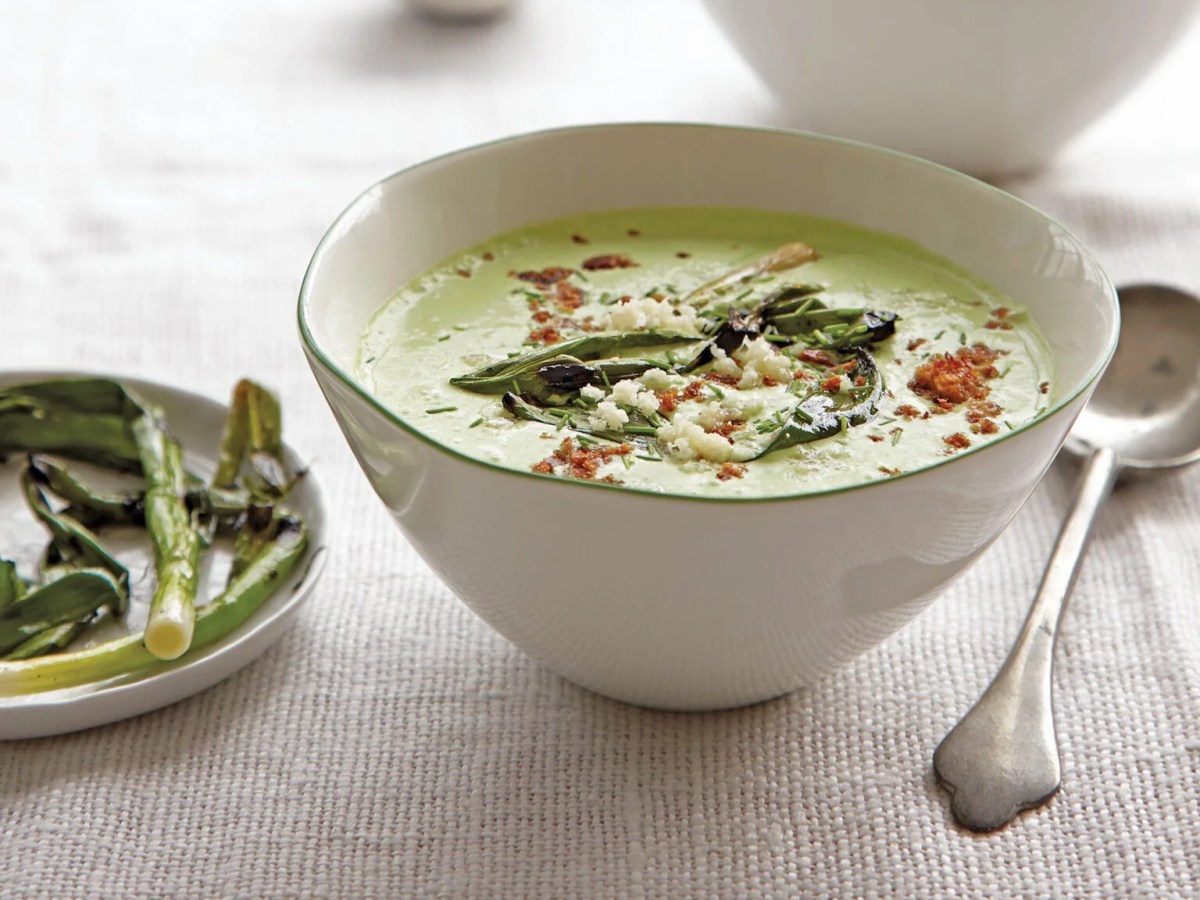Embrace the vibrant hues and fresh flavors of spring with a collection of delectable vegetarian recipes. Imagine sun-drenched plates overflowing with the season’s bounty – tender asparagus spears, vibrant radishes, sweet peas, and more. This culinary journey explores creative salads, comforting pasta dishes, creamy risottos, and delightful spring-themed baked goods, all crafted with the freshest, most seasonal ingredients. Each recipe is designed to tantalize your taste buds and showcase the versatility of spring vegetables, transforming simple ingredients into unforgettable meals.
From the earthy sweetness of spring onions to the delicate bitterness of arugula, this guide delves into the unique characteristics of seasonal produce, offering insightful flavor combinations and step-by-step instructions to ensure culinary success. Discover innovative plating techniques that elevate your presentation, turning each dish into a work of art. Whether you’re a seasoned cook or a kitchen novice, this collection of recipes offers something for everyone, promising a delightful spring culinary experience.
Spring Vegetable Showcases

Spring’s bounty offers a vibrant array of vegetables perfect for creating fresh and flavorful vegetarian dishes. These vegetables, bursting with color and nutrients, provide a delightful canvas for culinary creativity. Their diverse textures and flavor profiles allow for endless possibilities in the kitchen.
Spring Vegetable Characteristics
Spring vegetables are characterized by their delicate flavors and often slightly sweet notes. Their textures vary widely, from the crisp snap of asparagus to the tender softness of peas. This diversity makes them ideal for a wide range of cooking methods, from simple salads to more elaborate stir-fries and roasted dishes. The following table details five key spring vegetables and their properties.
| Vegetable Name | Flavor Profile | Texture | Suggested Preparation Method |
|---|---|---|---|
| Asparagus | Slightly sweet, grassy, earthy | Crisp-tender | Roasting, grilling, sautéing |
| Peas | Sweet, subtly vegetal | Tender | Steaming, boiling, adding to salads or pasta |
| Spring Onions (Scallions) | Mild onion flavor, slightly sweet | Crisp, slightly pungent | Chopped raw in salads, stir-fries, or as a garnish |
| Radishes | Peppery, slightly spicy | Crisp, firm | Raw in salads, roasted, pickled |
| Spinach | Mildly earthy, slightly sweet | Tender, slightly wilted | Sautéed, added to salads, smoothies, or pasta dishes |
Nutritional Benefits Infographic
Imagine a vibrant infographic, a circular design bursting with color. At the center, a stylized image of the five vegetables – asparagus spears pointing upwards, plump peas, a bunch of spring onions, a cluster of red radishes, and a handful of spinach leaves – form a visually appealing centerpiece. Each vegetable is connected by a thin, leafy green line to a section dedicated to its nutritional benefits. These sections are depicted as brightly colored wedges, using a consistent color scheme. For example, asparagus might be represented by a pale green wedge, peas by a bright green, spring onions by a light yellow-green, radishes by a vibrant red, and spinach by a deep forest green. Within each wedge, key nutrients (Vitamin K, Vitamin C, folate, fiber, etc.) are listed with their respective amounts clearly visible in an easy-to-read font, perhaps using icons to represent each nutrient. The background color is a soft pastel green, creating a refreshing and spring-like feel. The overall design is clean and uncluttered, ensuring the information is easily digestible.
Flavor Combinations
Three distinct flavor combinations showcase the versatility of these spring vegetables:
1. Spring Pea and Asparagus Risotto: The sweetness of peas complements the earthy notes of asparagus, creating a harmonious blend in a creamy risotto. The risotto’s richness balances the vegetables’ delicate flavors.
2. Radish and Spring Onion Salad with Lemon Vinaigrette: The peppery bite of radishes is perfectly offset by the mild onion flavor of spring onions. A bright lemon vinaigrette adds acidity and zest, enhancing the overall freshness.
3. Spinach and Spring Onion Stir-fry with Garlic and Ginger: The earthy spinach is paired with the subtle onion flavor of spring onions in a stir-fry seasoned with aromatic garlic and ginger. This combination provides a savory and satisfying dish.
Recipe Inspiration
Spring’s bounty offers a vibrant palette of fresh vegetables, perfect for creating light and flavorful vegetarian salads and sides. These recipes highlight the season’s best, showcasing the unique textures and tastes of spring produce. Each dish is designed to be easily adaptable to your preferences and available ingredients, allowing for a personalized culinary experience.
Spring Vegetable Salads
The following recipes offer a diverse range of spring salad options, each centered around a different star vegetable. The emphasis is on simple preparation techniques that allow the natural flavors of the ingredients to shine.
Asparagus and Strawberry Salad with Lemon Vinaigrette
This salad combines the delicate sweetness of fresh strawberries with the earthy notes of asparagus, creating a refreshing and vibrant dish.
- Ingredients: 1 pound asparagus, trimmed; 1 pint strawberries, hulled and sliced; 1/4 cup red onion, thinly sliced; 1/4 cup crumbled feta cheese (optional); 2 tablespoons olive oil; 2 tablespoons lemon juice; 1 teaspoon Dijon mustard; Salt and pepper to taste.
- Preparation: Blanch asparagus in boiling water for 2-3 minutes until tender-crisp. Immediately plunge into ice water to stop the cooking process. Toss asparagus, strawberries, and red onion in a large bowl. Whisk together olive oil, lemon juice, and Dijon mustard in a small bowl. Season with salt and pepper. Pour dressing over the salad and toss gently. Top with feta cheese, if desired.
Pea and Mint Salad with Toasted Almonds
This salad features the bright green color and sweet flavor of fresh peas, complemented by the refreshing coolness of mint and the satisfying crunch of toasted almonds.
- Ingredients: 1 cup fresh or frozen peas; 1/4 cup fresh mint leaves, chopped; 1/4 cup slivered almonds, toasted; 2 tablespoons olive oil; 1 tablespoon lemon juice; Salt and pepper to taste.
- Preparation: If using frozen peas, thaw them completely. Combine peas, mint, and toasted almonds in a bowl. Whisk together olive oil and lemon juice. Season with salt and pepper. Pour dressing over the salad and toss gently.
Radish and Cucumber Salad with Dill Dressing
This refreshing salad showcases the peppery bite of radishes and the cool crispness of cucumbers, balanced by the aromatic herb dill.
- Ingredients: 1 bunch radishes, thinly sliced; 1 cucumber, thinly sliced; 1/4 cup fresh dill, chopped; 2 tablespoons olive oil; 2 tablespoons white wine vinegar; Salt and pepper to taste.
- Preparation: Combine radishes, cucumber, and dill in a bowl. Whisk together olive oil and white wine vinegar. Season with salt and pepper. Pour dressing over the salad and toss gently.
Spring Vegetable Side Dishes
These side dishes are designed to complement the salads, offering a variety of textures and flavors to create a well-rounded spring meal.
Roasted Spring Carrots with Honey and Thyme
The sweetness of carrots is enhanced by roasting them with honey and thyme, creating a simple yet elegant side dish.
- Ingredients: 1 pound carrots, peeled and chopped; 2 tablespoons olive oil; 1 tablespoon honey; 1 teaspoon fresh thyme leaves; Salt and pepper to taste.
- Preparation: Preheat oven to 400°F (200°C). Toss carrots with olive oil, honey, thyme, salt, and pepper. Spread in a single layer on a baking sheet. Roast for 20-25 minutes, or until tender and slightly caramelized.
Sautéed Green Beans with Garlic and Lemon
This quick and easy side dish showcases the vibrant green color and crisp texture of fresh green beans.
- Ingredients: 1 pound green beans, trimmed; 2 tablespoons olive oil; 2 cloves garlic, minced; 1 tablespoon lemon juice; Salt and pepper to taste.
- Preparation: Heat olive oil in a large skillet over medium heat. Add garlic and sauté for 1 minute until fragrant. Add green beans and sauté for 5-7 minutes, or until tender-crisp. Stir in lemon juice, salt, and pepper.
Simple Asparagus with Parmesan
This elegant side dish highlights the delicate flavor of asparagus with a touch of salty parmesan cheese.
- Ingredients: 1 pound asparagus, trimmed; 2 tablespoons olive oil; 1/4 cup grated Parmesan cheese; Salt and pepper to taste.
- Preparation: Blanch asparagus in boiling water for 2-3 minutes until tender-crisp. Immediately plunge into ice water to stop the cooking process. Toss with olive oil, Parmesan cheese, salt, and pepper.
Spring Menu Layout
The menu could be presented as a visually appealing three-column layout. The left column features the three salads, each with a captivating photograph showcasing its vibrant colors and fresh ingredients. The right column showcases the three side dishes, similarly presented with enticing photos. The center column would feature a brief description of each dish, highlighting its key ingredients and flavors. A soft, spring-like color palette, perhaps with pastel greens and yellows, would complement the fresh, seasonal theme. A delicate, handwritten-style font would enhance the overall aesthetic, creating a menu that is both informative and visually inviting.
Main Course Marvels
Spring’s vibrant bounty offers a plethora of fresh vegetables perfect for creating light yet satisfying vegetarian pasta and risotto dishes. These recipes showcase the season’s best, transforming simple ingredients into culinary masterpieces. The contrasting textures and flavors of the pasta and risotto preparations offer a delightful exploration of spring’s culinary gifts.
Spring Vegetable Pasta Primavera
This vibrant pasta dish bursts with the colors and flavors of spring. A light lemon-garlic sauce ties together the medley of fresh vegetables, creating a dish that is both elegant and satisfying.
- Prepare the Vegetables: Begin by washing and chopping a medley of spring vegetables such as asparagus (cut into 1-inch pieces), peas (shelled), snap peas (trimmed), and fresh spinach (roughly chopped). Consider adding thinly sliced zucchini or yellow squash for extra color and texture.
- Cook the Pasta: Cook your favorite pasta shape (linguine or fettuccine work well) according to package directions until al dente. Reserve about ½ cup of pasta water before draining.
- Sauté the Vegetables: Heat 2 tablespoons of olive oil in a large skillet over medium heat. Add the asparagus and zucchini/squash and sauté for 3-4 minutes until slightly tender-crisp. Add the peas and snap peas and cook for another 2 minutes. Stir in the spinach and cook until wilted.
- Create the Sauce: In a small bowl, whisk together 2 tablespoons of olive oil, 2 tablespoons of lemon juice, 2 cloves of minced garlic, salt, and pepper to taste. A pinch of red pepper flakes adds a subtle kick.
- Combine and Serve: Add the cooked pasta to the skillet with the vegetables. Pour the lemon-garlic sauce over the pasta and toss to coat. Add a little reserved pasta water if needed to loosen the sauce. Serve immediately, garnished with freshly grated Parmesan cheese (optional) and a sprinkle of chopped fresh parsley.
Creamy Lemon Ricotta Pasta with Spring Greens
This recipe offers a richer, creamier pasta experience, showcasing the delicate flavors of spring greens and the tangy sweetness of ricotta cheese. The creamy lemon sauce complements the fresh vegetables perfectly.
- Prepare the Greens: Wash and chop a mixture of spring greens, such as arugula, spinach, and tender young dandelion greens.
- Cook the Pasta: Cook your preferred pasta shape (farfalle or rotini are good choices) according to package directions until al dente. Reserve about ½ cup of pasta water.
- Prepare the Sauce: In a medium bowl, combine 1 cup of whole milk ricotta cheese, 2 tablespoons of grated Parmesan cheese, 2 tablespoons of lemon juice, 1 tablespoon of olive oil, salt, and pepper to taste. Whisk until smooth and creamy.
- Combine and Serve: Add the cooked pasta and spring greens to the ricotta mixture. Toss gently to coat. Add a little reserved pasta water if needed to create a creamy consistency. Serve immediately, garnished with a sprinkle of lemon zest and extra Parmesan cheese (optional).
Asparagus and Pea Risotto with Parmesan Crisp
This risotto showcases the delicate flavors of asparagus and peas, enhanced by a rich parmesan crisp for added textural contrast. The creamy Arborio rice absorbs the spring vegetable flavors beautifully.
- Prepare the Vegetables: Trim and thinly slice 1 bunch of asparagus. Shell 1 cup of fresh or frozen peas.
- Sauté Aromatics: In a large saucepan, melt 2 tablespoons of butter over medium heat. Add 1 small chopped shallot and sauté until softened (about 2 minutes). Add 1 ½ cups of Arborio rice and toast for 2-3 minutes, stirring constantly.
- Add Liquid Gradually: Add 1 cup of dry white wine to the rice and stir until absorbed. Gradually add 4-5 cups of hot vegetable broth, one cup at a time, stirring constantly until each addition is absorbed before adding more. This process takes about 20-25 minutes.
- Incorporate Vegetables: Add the asparagus and peas during the last 5-7 minutes of cooking. Stir until the asparagus is tender-crisp and the peas are heated through.
- Finish and Serve: Stir in 2 tablespoons of butter and ½ cup of grated Parmesan cheese. Season with salt and pepper to taste. Serve immediately, topped with a parmesan crisp (made by baking thin slices of parmesan cheese until golden brown and crispy).
Spring Vegetable Risotto with Lemon and Herbs
This risotto features a vibrant medley of spring vegetables, enhanced by the bright flavors of lemon and fresh herbs. The cooking technique focuses on building layers of flavor through gradual addition of ingredients.
- Prepare Vegetables: Dice 1 cup of carrots, 1 cup of zucchini, and ½ cup of yellow squash. Finely chop ½ cup of fresh chives and 2 tablespoons of fresh parsley.
- Sauté Aromatics: In a large saucepan, heat 2 tablespoons of olive oil over medium heat. Add 1 small chopped onion and sauté until softened (about 3 minutes). Add 1 ½ cups of Arborio rice and toast for 2-3 minutes, stirring constantly.
- Add Liquid Gradually: Add 1 cup of vegetable broth to the rice and stir until absorbed. Gradually add 4-5 cups of hot vegetable broth, one cup at a time, stirring constantly until each addition is absorbed. This process takes about 20-25 minutes.
- Incorporate Vegetables and Herbs: Add the diced carrots, zucchini, and yellow squash during the last 10 minutes of cooking. Stir in the chives and parsley during the last 2 minutes.
- Finish and Serve: Stir in 2 tablespoons of butter, 2 tablespoons of lemon juice, and ½ cup of grated Parmesan cheese. Season with salt and pepper to taste. Serve immediately.
As the sun shines brighter and the days grow longer, celebrate the arrival of spring with these vibrant and flavorful vegetarian recipes. This collection showcases the beauty of seasonal ingredients, transforming simple vegetables into culinary masterpieces. From the refreshing crunch of spring salads to the comforting warmth of creamy risottos, each dish offers a unique taste of the season. We hope these recipes inspire you to embrace the abundance of spring, creating memorable meals that are as visually appealing as they are delicious. So gather your ingredients, let your creativity flow, and embark on a culinary adventure filled with fresh flavors and spring’s vibrant energy.
Essential FAQs
What are some good substitutes for spring vegetables if they’re not in season?
Depending on the recipe, you can often substitute with other vegetables that offer similar textures and flavors. For example, you could use summer squash instead of asparagus or zucchini in place of spring onions.
How can I make these recipes gluten-free?
Many of these recipes are naturally gluten-free. For those that contain pasta or baked goods, simply substitute gluten-free pasta or baking flour.
Can I prepare some components of these recipes ahead of time?
Absolutely! Many components, such as chopping vegetables or making salad dressings, can be done in advance to save time on the day of serving.
How do I store leftovers?
Store leftovers in airtight containers in the refrigerator for up to 3-4 days. Remember to let them cool completely before storing.


